Inversion Tectonics in the Blue Ridge
By Kelly Thigpen ’21
Virginia’s Blue Ridge Mountains are underlain by old rocks, some of which formed more than a billion years ago. These old rocks have stories to tell – they bear witness to a long and complex history that includes episodes of continental collision/ mountain building as well as rifting, continental break-up, and ocean basin formation. My senior research is focused on understanding the origin of geologic structures in the Blue Ridge near Little Stony Creek not far from the Wintergreen Resort in Nelson County.
The geology of the area was originally mapped by Jerry Bartholomew as part of his Ph.D. thesis research at Virginia Tech in the 1970s. During his research he recognized an isolated structure underlain by the metasedimentary and metavolcanic rocks of the Swift Run and Catoctin formations that is completely surrounded by the much older granitic rocks of the Blue Ridge basement complex. Bartholomew mapped the northwestern boundary of this small belt as a fault (we call it the Little Stony Creek fault) that displaced the younger rocks downward, placing those rocks in contact with the older granitic rocks. The Little Stony Creek fault is unusual as most faults in the Blue Ridge displace older rocks over younger rocks (the opposite of the Stony Creek fault).
What’s up with the Little Stony Creek fault? That’s where my research begins, as I’m investigating the kinematics (movement) of this fault and attempting to ascertain the relative timing of slip and deformation along this structure.
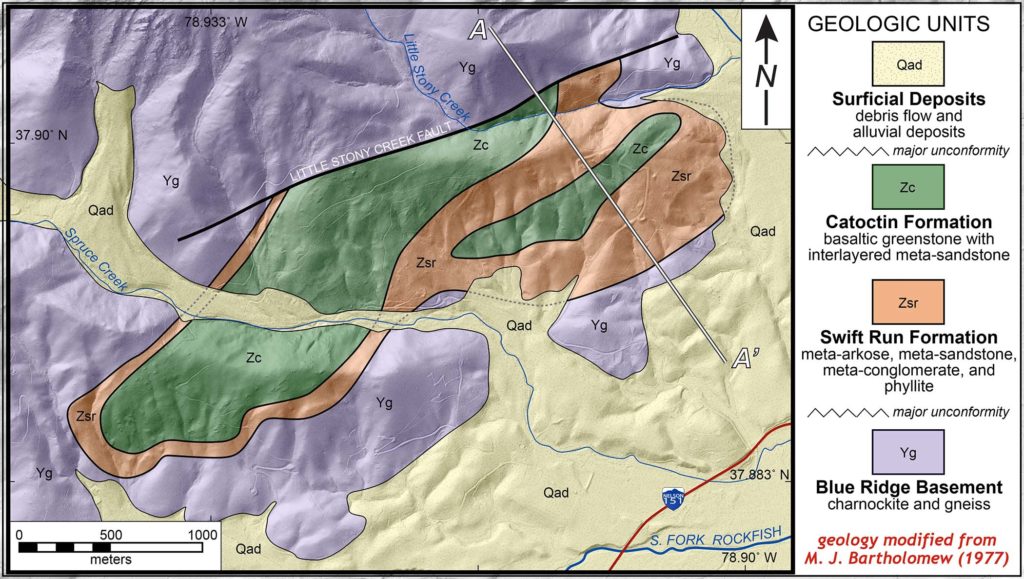
Geologic map of the Little Stony Creek fault, located in the Sherando 7.5’ Quadrangle, Virginia. Click to see a bigger image.
In a later paper, Bartholomew and others (1991) suggested that the Little Stony Creek fault is one of a number of Blue Ridge faults that originally formed during as Paleozoic reverse/thrust faults that were then reactivated during the Mesozoic as normal faults. In 2002, my advisor Chuck Bailey and W&M undergraduate researchers Scott Giorgis ’97 and Lorrie Coiner ’99 published a paper in the Journal of Structural Geology focused on the Tye River fault zone, located ~15-25 km to the southwest of the Little Stony Creek fault, making a case that these faults first developed as Ediacaran normal faults during the rifting that lead to the formation of the Iapetus Ocean. They argued these older faults then experienced tectonic inversion during the Paleozoic and were reactivated as reverse faults. These two tectonic models are effectively the inverse of one another (ironic, eh!) in regard to both the kinematics and timing of deformation.
More recently at a geological meeting in 2019, Jerry Bartholomew encouraged Chuck to study the Little Stony Creek fault – it’s cool that my project sprung forth from a scientific disagreement in which the protagonists agreed that further study was warranted.
Deciphering the history of old fault zones is difficult, but there are clues preserved in the rock record. To uncover these clues, I went to the field and carefully measured the orientation of geological structures in multiple outcrops. Geological structures such as bedding which originally forms in a horizontal orientation as well as foliation, a secondary feature that develops when rocks are squeezed and sheared provide the key data in which to resolve a region’s tectonic history.
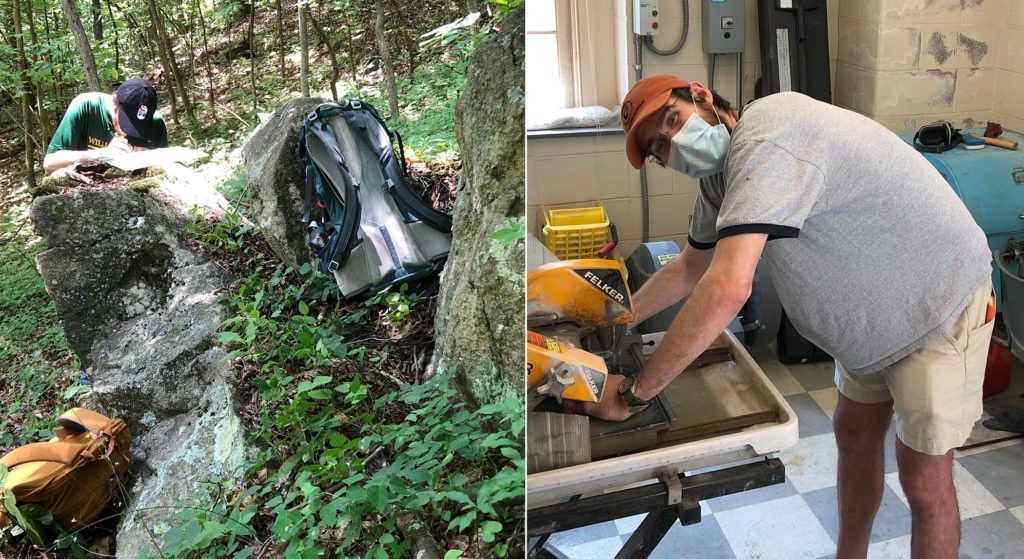
Left: socially distanced field work along Little Stony Creek. Right: me and the rock saw cutting one my samples.
Field work supplied me with a set of samples to better evaluate the kinematics of the Little Stony Creek fault. Back in the Geology Department, I sawed the rocks into slabs and billets for petrographic thin sections (using a super-cool diamond bladed saw). Under a microscope, light passes through these thin sections (~0.03 mm) of rocks to reveal a wealth of information. Structural geologists make observations at this teenie-weenie scale to gain insight regarding the kinematics and deformational history of rocks.
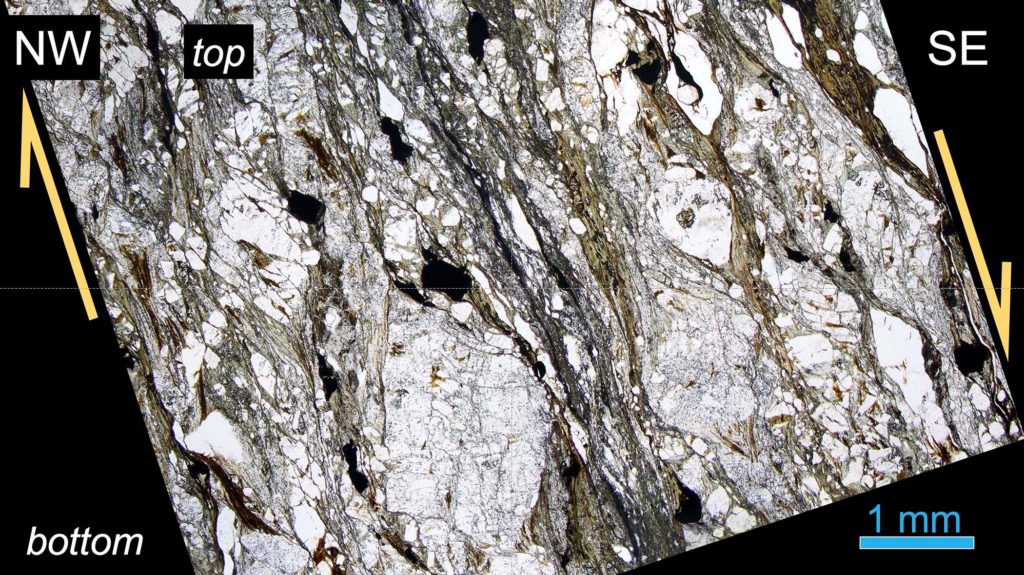
Photomicrograph (in plane polarized light) of a sheared granitic mylonite from the Little Stony Creek fault. Kinematic indicators record top-to-the SE shear. Click to see a bigger image.
My research demonstrates that the Little Stony Creek fault is a steeply-dipping zone along which the granitic basement rocks have been transformed into mylonitic rocks. Mylonitic rocks develop at great depth in the Earth when rocks are under sufficiently high temperature and pressure to flow in a ductile fashion. These results don’t match the predicted observations of either model. If Mesozoic faulting took place, we’d expect brittle deformation to be pre-dominant. The mylonitic rocks are consistent with Paleozoic shear, but the kinematics of slip suggests normal fault motion. As my thesis research winds down, I’m trying to devise my own model to explain these geological features.
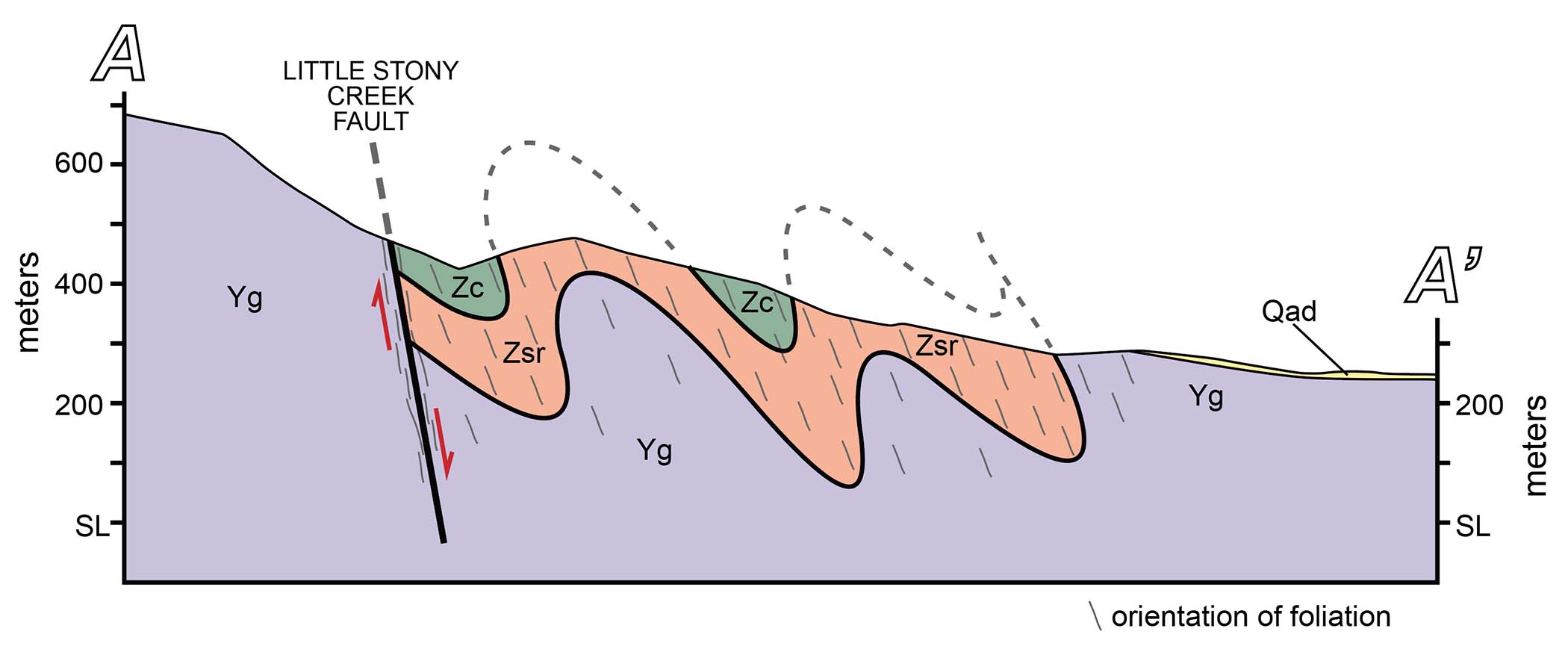
Geological cross section across the Little Stony Creek fault. Note the normal displacement across the Little Stony Creek fault and the overturned folds affecting the Swift Run and Catoctin formations.
Biking home after a long day in the research lab, listening to Elliott Smith, I think back on my experiences at William & Mary. Upon matriculation, I intended to become a history major, but after my first class in geology, I knew I was hooked. People ask me all the time what it is about geology that fascinates me so. A quote by Princeton professor Jim Peebles best speaks to my fascination:
“Research such as ours is driven by the human imperative to understand where we are. It motivates the study of our positions in family, or in society, or on earth. The results may be termed geology, or sociology, or poetry.”
To me, geology provides an incredible sense of perspective. It is hard to feel too worried about the little things that bring you down if you have the right perspective on life.
Comments are currently closed. Comments are closed on all posts older than one year, and for those in our archive.

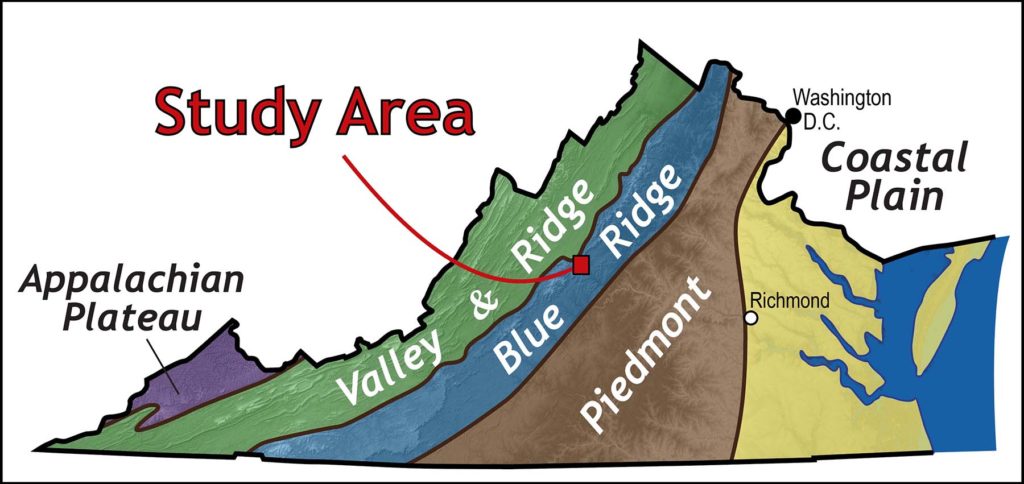
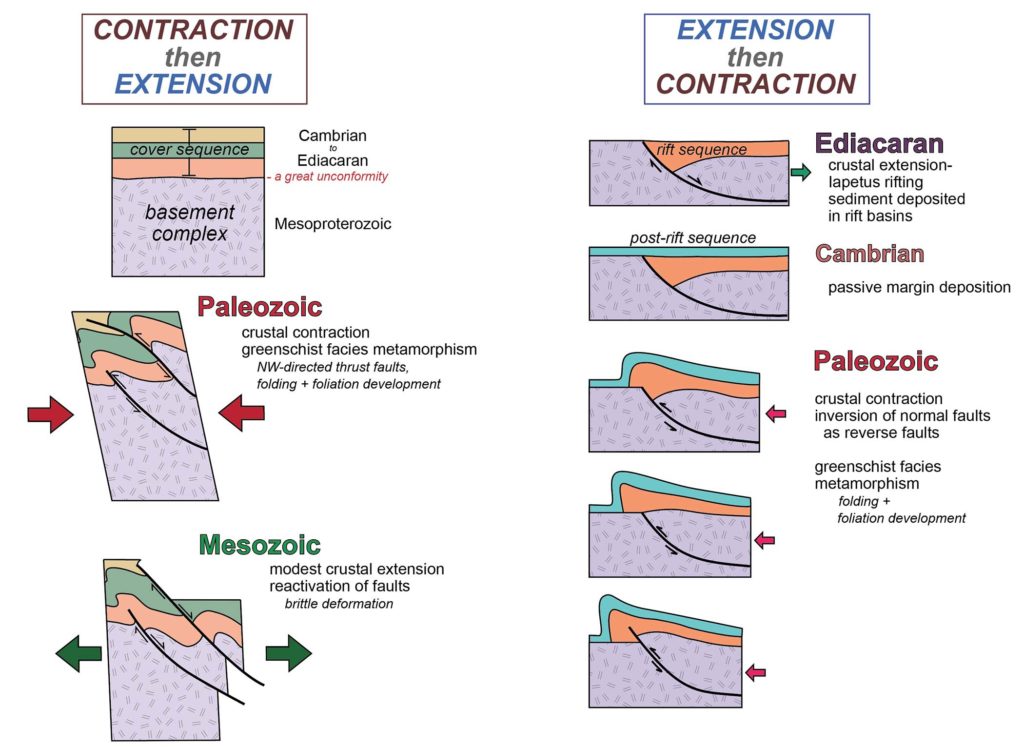



Great work, Kelly! Loved reading this.
Kelly this blog is sick!
Kelly, start looking at from the perspective that you are well within the range of the Chesapeake impact if you’re searching from a cause for structural inversion: http://impacttectonics.org/2020/2020%20Chesapeake%20disruption.html. Nice blog.